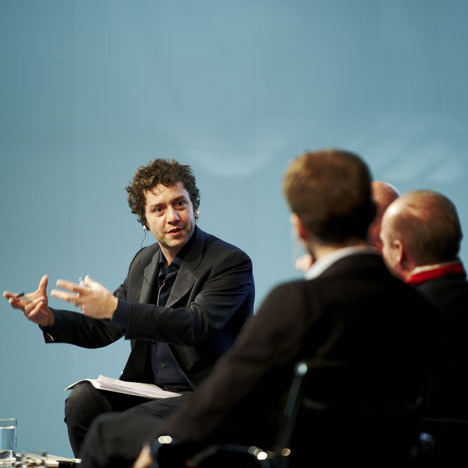
Dornbracht Conversations 3: panel 2 - Extra/Ordinary
Dezeen movies: here are the highlights of the second panel discussion at Dornbracht Conversations 3, featuring creative director Mike Meiré, critic Thomas Wagner, architect and designer Matteo Thun and moderator Marcus Fairs of Dezeen.
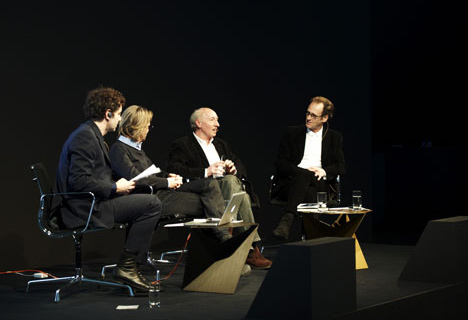
While the first panel looked critically at the design movements of the past, the second panel tried to distill where design is heading today and was titled Extra/Ordinary. This was also the title of the presentation given by Meiré at the start of the second session, in which he set out his observations and thoughts on the contemporary design landscape (see film below).
Can't see the movie? Click here
The second session also saw Matteo Thun describing the Memphis movement - in which he was a key protagonist - and the reasons why it came about (see film below).
Can't see the movie? Click here
Our final movie from Dornbracht Conversations 3 features the panel taking questions from the audience (below).
Can't see the movie? Click here
See our earlier story for movie highlights from the first panel, as well as a full text about the event and speaker biographies.
Below is a text summarising Dornbracht Conversations 3 by Marcus Fairs, followed by biographies of the speakers from the second panel:
Thoughts on Dornbracht Conversations 3 by Marcus Fairs
“Design is and always will be the formal expression of a culture,” said designer Michael Sieger during the first panel discussion at Dornbracht Conversations 3.
But the time when critical discourse was dominated by easy-to-identity styles such as Art Deco, Modernism and Post-Modernism – each of which rose from specific cultural conditions before becoming universal - is gone; design has splintered into a million concurrent sub-styles and micro-trends. The contemporary design landscape lacks a “sustainability of aesthetics”, as curator and critic Mateo Kries put it. And no wonder, as culture these days hardly stays still long enough for designers to give it shape.
DC3 was convened to read the runes of contemporary design and ascertain whether a new design movement might emerge from this pluralism. The title, Extra/Ordinary, reflects Dornbracht creative director Mike Meiré’s observation that in a visual culture where anything goes, the extraordinary becomes ordinary; rather than pursue formal obsessions, the best design today sees form as incidental to the real issue of designing products that serve as portals to, or filters of, experience.
Andreas Dornbracht touched on this when describing how Dornbracht approaches product development: the important issue now is not the experience of the tap, but the experience of the water. It’s the software that counts; the hardware is a facilitator.
Meiré, together with Italian architect and designer Matteo Thun and German critic Thomas Wagner, debated the notion of Extra/Ordinary in greater depth in the second panel but first Sieger, Kries and Dornbracht reviewed the great design movements of the last century and their relevance today.
Each brought along a small selection of images to represent what they felt were the key Twentieth-Century moments and there was a surprising consensus in their views. Early Modernist and Bauhaus designs featured strongly, as did the work of German designer Dieter Rams for consumer electronics brand Braun, which for the first time dressed high technology in a rationalist skin.
Eighties design was well represented including Post-Modernism and especially Memphis, with the panel agreeing that the movement that exploded out of Milan in the eighties was the last true revolution in design.
Kries argued that Dutch collective Droog, which introduced the idea of the object as narrative device and which has exerted a strong influence since its founding in 1993 – was worthy of inclusion in the design pantheon.
The panel agreed that it was hard to discern a movement of similar importance today but by far the greatest number of images they selected of contemporary design featured Apple products. The work of superstar designers from the last decade didn’t register, but iMacs, iPads and iPhones were held up as the seminal objects of our time.
Since iPads and iPhones are hardware designed to facilitate access to software, they could be seen as the ultimate expression of Extra/Ordinary: they are physical objects of highly reduced form yet they give access to a rich digital experience. Perhaps “Apple-ism” is the Twenty-First Century’s answer to Fordism.
Technology was one of four drivers of change identified by the panel as powerful enough to trigger design’s next big thing. The others were sustainability (a recent book, “Sustainism” by Michiel Schwarz and Joost Elffers, claims that this is already the new “ism”), demographics (especially the rise of China and India as potentially huge markets) and “Super Normal” – the name of an exhibition, book and mini-movement initiated in 2006 by designers Jasper Morrison and Naoto Fukasawa.
Super Normal celebrates objects both new and old that unify form and function with no superfluity. It encompasses high design as practiced by Morrison and Fukasawa as well as everyday objects such as coffee pots, bottle openers and clothes pegs (Kries had included a picture of the latter in the images he selected for Dornbracht Conversations 3).
Super Normal is a close cousin of Meiré’s notion of the Extra/Ordinary, although Extra/Ordinary happily co-exists with and embraces today’s design anarchy and even seeks to aid navigation through it, while Super Normal is more a refuge from it.
To summarise the first panel: Modernism dominated the last century and nothing has yet emerged to replace it, although Memphis provided a significant aesthetic jolt. Design history has reached a frayed end and the most interesting force in design today is computer-making corporation Apple.
The second panel began with Mike Meiré presenting his thoughts on Extra/Ordinary, setting out the forces that shape contemporary culture and design. No wonder we are confused, he seemed to be saying, since this century opened with the trauma of 9/11 and since then many other certainties have been incinerated in the relentless furnace of technology. No wonder there are no dominant design manifestos when our visual culture contains both Jasper Morrison and Lady Gaga (and we are able to appreciate both without contradiction). Culture has lost its tribalism, the panel later agreed; in order to like one flavour of creativity it no longer follows that you have to dislike all the others. Memphis did for design what punk did for pop and it is debateable whether the conditions of anger and frustration at mainstream culture that drove both could be replicated today, since there is no monolithic mainstream against which to rail.
I got lost in the discussion following Meiré’s presentation, as it lapsed into German and involved lengthy quotations from Heidegger. In hindsight this could perhaps be seen as a sneaky rearguard action by analogue culture and a reminder that, Apple and Lady Gaga notwithstanding, globalisation has yet to deliver a common language.
My favourite anecdote of the second panel – of those that I could understand – was Matteo Thun’s reaction to the praise heaped on Memphis in the earlier session. Thun, who worked with Memphis ringmaster Ettore Sottsass and was part of the group from the beginning, said that the critical narrative that has since developed around the movement wrongly post-rationalises its intentions. “We did it because we were really pissed off”, Thun stated, denying that there was an intellectual manifesto behind the work. The printed surfaces that became a radical Memphis signature – and onto which design critics have pasted various readings - came about prosaically because the only sponsor they could find was a manufacturer of patterned laminates.
Around this point, with a century of design history having been deconstructed yet no strong consensus emerging on where that history goes next, it suddenly occurred to me that critics scrapping over the next “ism” were a bit like bald men fighting over a comb. What if the design lineage that started with Modernism has in fact come to an end? Maybe the next big thing is not design at all but something else entirely, most likely driven by technology? Perhaps design itself is an “ism” – “designism” that has already had its time?
Design as we know it has lasted a good hundred years and done much to change the world we live in for the better, but perhaps today it has become so splintered – and so ubiquitous - that it has lost its meaning.
Designism is dead. That really is an Extra/Ordinary thought.
MATTEO THUN
Matteo Thun, Architect and Designer, born in Bolzano in 1952, studied at the Academy of Salzburg with Oskar Kokoschka and at the university of Florence. After having worked with Ettore Sottsass, Matteo Thun became the co-founder of the ‘Memphis Group in Milan.
Milan and partner of ‘Sottsass Associati’ from 1980 to 1984 when he opened his own studio in Milan. At the same time, he taught at the faculty of design at the university of Applied Arts in Vienna (Hochschule für Angewandte Kunst, Wien) from 1983 to 2000. In addition he acted as Art Director for Swatch from 1990 to 1993. In 2000 he started the M.T. Partnership (MTP) with the partners Luca Colombo, Herbert Rathmaier and Antonio Rodriguez. Today, the studio includes a team of 50 architects and designers.
MIKE MEIRé Mike Meiré, born in 1964, works and lives in Cologne. In 1987 he founded the agency Meiré und Meiré together with his brother Marc and in 2001 he established the cultural production company NEO NOTO. His most important projects include the arts and culture magazine APART and the business magazine brand eins, which has received numerous awards. In addition to work on magazines such as Arch+, kid’s wear, 032c and MINIInternational, he stages projects that deal with the cultural aspects of brands with regards to art, architecture, fashion and design. Together with Dornbracht, he developed and curated the project series State- ments and subsequently Edges with his own artistic contributions. With a great deal of experience with crossover projects, he switches between the roles of art director, the designer and the artist. He has been working as Creative Director for Dornbracht for more then 15 years and among other things is responsible for the corporate identity and product and brand communication.
THOMAS WAGNER
Thomas Wagner, born in 1955, is an author, art critic and design expert. He studied German and philosophy in Heidelberg and Brighton, Sussex. He has been editor for visual arts at the FAZ since 1991, and since 1997 for design. Along with Eduard Beaucamp, the grandmaster for classic and modern arts, he was responsible for discussing contemporary art. Thomas Wagner is an honorary professor for art and art criticism at the Academy of Fine Arts in Nuremberg. He writes regularly for both the ART as a social critic as well as as a design critic for Stylepark etc.
MARCUS FAIRS (Presenter)
Marcus Fairs is a journalist, entrepreneur, curator, founder of the Icon magazine, and editor of the Dezeen web magazine. He also works in radio and television. A furniture design graduate, Marcus began his journalism career writing for publications including Blueprint, The Guardian, The Independent on Sunday and Conde Nast Traveller. He launched icon, the international architecture and design magazine, in 2003, and edited the publication until November 2006. under Marcus, the magazine rapidly established itself as one of the world’s most influential and respected design journals, winning a string of awards including Launch of the Year and Designer of the Year in 2003 and Monthly Magazine of the Year in 2005 and 2006. Marcus Fairs himself has won numerous awards, including Journalist of the Year (2002) and Architectural Journalist of the Year (2004). He won a BSME award for Best Brand-Building Initiative in 2005. Marcus Fairs lives and works in London.
See also:
.
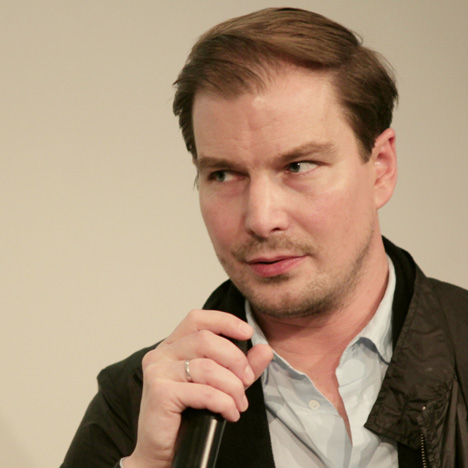 |
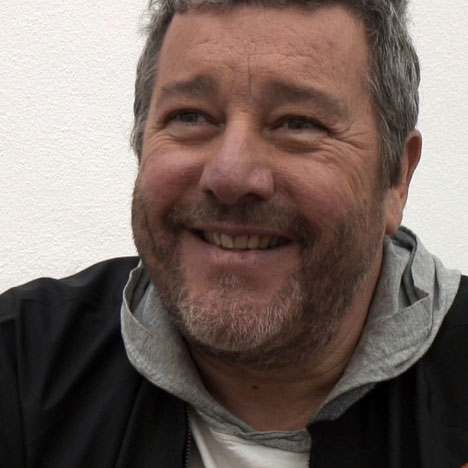 |
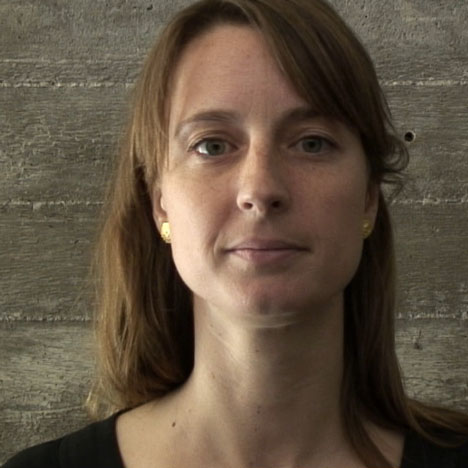 |
| Dezeen movie: Stefan Diez |
Dezeen movie: Phillipe Starck |
Dezeen movie: Kiki van Eijk |